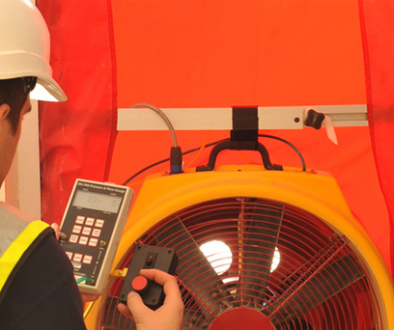PIV – Positive Input Ventilation
In contrast to normal extraction which removes stale air from a dwelling, PIV moves fresh air from outside into the dwelling, subsequently pushing the stale air out through air bricks, keyholes, open windows and other air channels.
PIV operates on the basis that regardless of the standard a house is built to, none are completely air tight and exempt to unwanted levels of air leakage. Due to improvements in building regulations and procedures, it is now necessary to measure air permeability of new dwellings to confirm there is enough air leak for PIV to be utilised effectively.
Despite the rarity of this being an issue, PIV is more commonly used in older dwellings as they do not require as much vents and ducting and are therefore easier to retrofit. New builds often utilise Mechanical Extraction Ventilation or Mechanical Extraction Ventilation Heat Recovery.
What is positive input ventilation?
PIV is an energy efficient system of removing and replacing stale air with cleaner fresh air by filtering in air into the building and improving the flow of fresh air around the dwelling.
Is Positive Input ventilation any good?
PIV lowers the humidity in the building, which is known to prevent dust mites from excelling. PIV protects residents from various harmful air pollutants that infiltrate and hang around in buildings unless adequate air flow removes them. Due to the nature of heat rising, lofts are typically warmer spaces in the building. The flow of air due to a PIV system means this warmer air is moved by the new fresh air and can have a modest but noticeable impact on the temperature of the building.
Is a PIV system worth it?
PIV has various advantages to the people within the home, it is particularly beneficial to those who suffer from asthma or allergies and can bring great improvements to their health. A further benefit of PIV is that it the radon levels can be lowered in areas impacted by this.
How much does a PIV unit cost to run?
A PIV unit averages a use of 5 watts of power to run which equates to just 1p a day. This low-cost results in PIV systems being perceived as one of the most inexpensive means of providing whole home ventilation to a dwelling.
Does a PIV unit cure damp and condensation?
Condensation is a growing problem in the UK where it is estimated 1/5 houses have inadequate ventilation causing risk of streaming windows, mould, dampness, and poor air quality.
New builds and more modern homes are still at risk of condensation, and poorly heated homes are vulnerable to condensation dampness. Whereas sufficiently insulated homes can trap most air inside the property. High air humidity often condenses on surfaces as the air temperature lowers. These surfaces which are prone to condensation quickly begin to suffer from mould growth. Thankfully by taking advantage of the PIV systems benefits, air humidity will be maintained at a stable and suitable level, which prevents issues of condensation and mould spores. PIV systems are the most cost-effective and efficient whole home system available in curing dampness, mould and condensation by ensuring clean air flows through the home and removing poor quality air.

